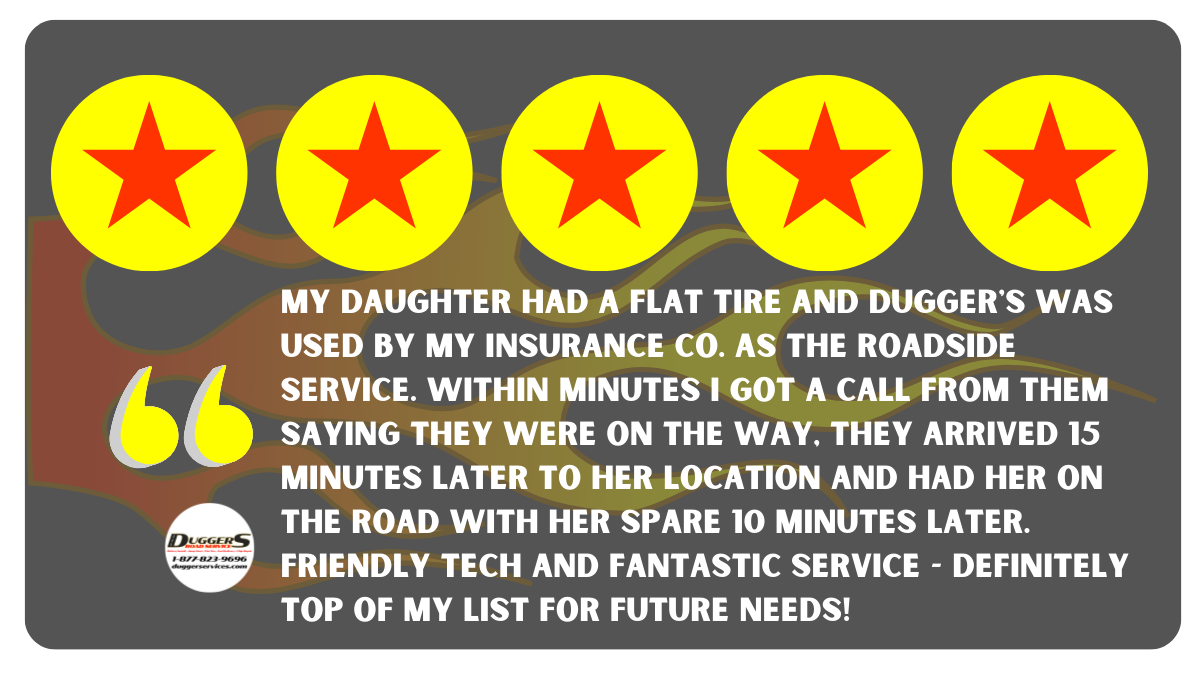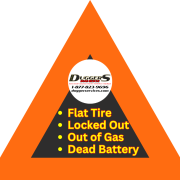Road Rescue Guide to Handling Flat Tires: When to Call for Help
Getting a flat tire can be a stressful experience, but knowing how to handle it can make all the difference. Whether you’re on your way to work or headed out for a weekend adventure, a flat tire doesn’t have to ruin your day. In this guide, we’ll walk you through the steps you should take if you find yourself with a flat tire, provide crucial safety tips, and explain when it’s best to call Dugger’s Road Rescue for professional assistance.
When to Call Dugger’s Road Rescue:
Changing a tire can be daunting, especially on busy roads or in adverse weather conditions. Here’s when you should call us for flat tire help:
- You lack the necessary tools or experience.
- You’re in an unsafe location or poor weather conditions.
- The flat tire is beyond repair, and you need a replacement.
- You prefer the peace of mind that comes with professional assistance.
At Dugger’s Road Rescue, we offer 24/7 emergency roadside assistance to ensure you’re never stranded. Our experienced technicians provide fast, reliable tire change services to get you back on the road swiftly and safely.
Remember, a flat tire doesn’t need to derail your plans. Whether you choose to handle it yourself or call in the experts, knowing what to do can save you time and stress.
If you are confident in your Safety, Ability, Vehicle Tools:
- Find a Safe Spot: As soon as you notice a flat tire, slowly reduce your speed and look for a safe place to pull over. Ideally, find a flat, straight section of road away from traffic. Turn on your hazard lights to alert other drivers.
- Assess the Situation: Once you’re safely parked, exit your vehicle carefully and inspect the tire. Look for visible damage such as punctures, cuts, or complete blowouts. If the tire is severely damaged, it’s best not to attempt driving on it.
- Gather Your Tools: If you decide to change the tire yourself, ensure you have the necessary tools: a spare tire, jack, lug wrench, and possibly a tire repair kit if you’re planning a temporary fix.
- Loosen the Lug Nuts: Before you jack up the car, use the lug wrench to slightly loosen the lug nuts on the flat tire. This will make it easier to remove them once the car is elevated.
- Jack Up the Car: Place the jack under the car’s frame near the flat tire. Follow your vehicle’s manual for the correct placement. Slowly raise the car until the flat tire is off the ground.
- Remove the Flat Tire: Fully loosen and remove the lug nuts, then gently take the flat tire off the wheelbase. Place it aside.
- Install the Spare Tire: Align the spare tire with the wheel studs and push it onto the wheelbase. Hand-tighten the lug nuts as much as possible.
- Lower the Car: Carefully lower the car back to the ground using the jack. Once the car is fully grounded, use the lug wrench to tighten the lug nuts in a star pattern to ensure even tightening.
- Check Everything: Double-check that the lug nuts are tight and the spare tire is secure. Drive cautiously and have the flat tire repaired or replaced as soon as possible.
- Always keep an emergency kit in your car including reflective triangles, flares, a flashlight, and gloves.
- Never change a tire on an incline or soft ground.
- Ensure your spare tire is always properly inflated and in good condition.





